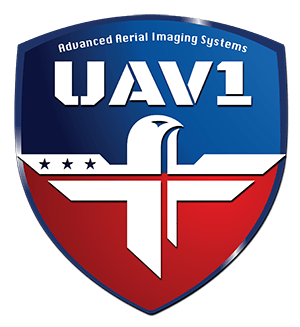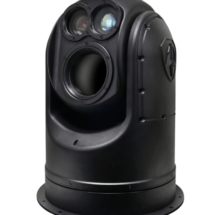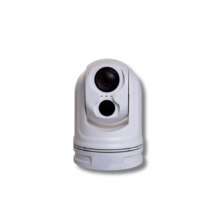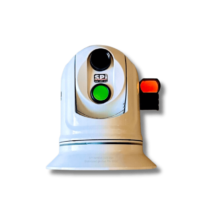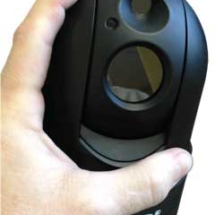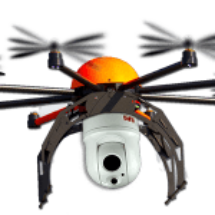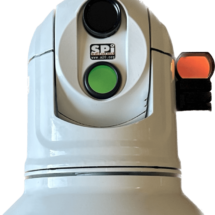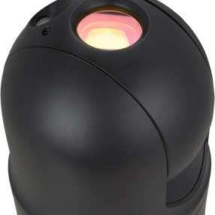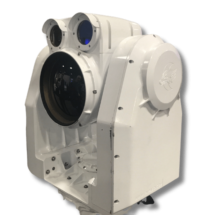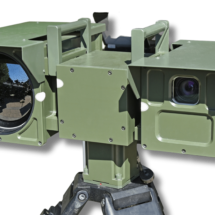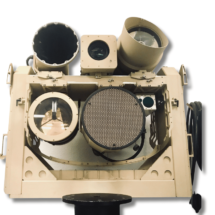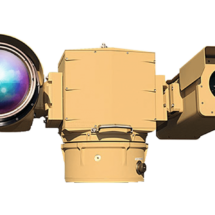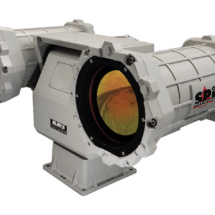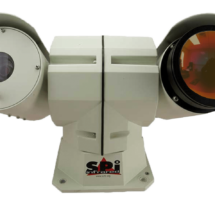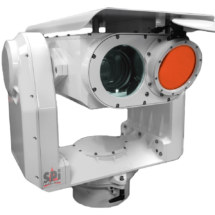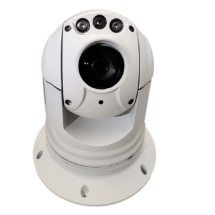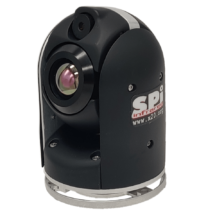Long Range Thermal Imaging In Airport Security
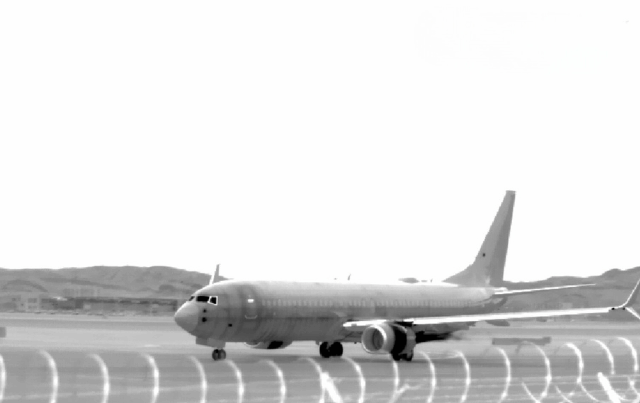
Introduction: The New Age of Airport Security
The story of airport security is one of constant evolution. From the early days when a simple ticket check and metal detectors sufficed, to the post-9/11 era where stricter measures became the norm, the journey of ensuring safe skies has been a dynamic one. As threats have evolved, so too have the methods to counter them. In this ever-changing landscape, the role of technology has become paramount.
Advancements in security technology, like long-range thermal cameras, are not just enhancing existing procedures but are paving the way for a future where the balance between passenger convenience and security is better struck. This article delves into the transformative power of technological advancements in shaping the next generation of airport security.
What are Long Range Thermal Cameras?
Following the introduction of the advancements in airport security, a standout technology that merits attention is the long-range thermal camera. But what exactly is it?
Long-range thermal cameras, often referred to as infrared or IR cameras, are specialized imaging devices that detect infrared radiation (heat) emitted by objects. Unlike traditional cameras that capture visible light, thermal cameras visualize variations in temperature, producing images based on these heat signatures.
How Do They Work?
Every object, whether animate or inanimate, emits infrared radiation as a function of its temperature. These cameras capture this radiation and translate it into an image. The warmer an object is, the more radiation it emits, and this difference in radiation is what allows the camera to create a visual representation.
Using advanced sensors and algorithms, thermal cameras can produce clear images even in complete darkness, fog, or smoke.
Key Differences Between Thermal Cameras and Traditional CCTV Cameras:
- Sensitivity to Radiation, Not Light: While CCTV cameras rely on visible light to produce an image, thermal cameras use infrared radiation.
- Performance in Low-Light Conditions: Thermal cameras can operate in complete darkness, whereas traditional CCTV cameras require some form of light to capture clear images.
- Less Affected by Environmental Factors: Smoke, fog, and certain other environmental obstacles that can hinder the performance of CCTV cameras have minimal effect on thermal imaging.
- Detection Over Identification: While CCTV cameras are adept at identifying faces and specific details, thermal cameras are more about detecting heat signatures, making them excellent for spotting intruders or unattended objects but less so for identification purposes.
In the context of airport security, the ability of long-range thermal cameras to detect threats based on heat signatures, even in challenging conditions, offers a promising layer of protection that complements traditional surveillance methods.
Applications in Airport Security

As the aviation industry continues to prioritize the safety and security of its passengers and assets, long-range thermal cameras have emerged as invaluable tools in the security arsenal. Their unique capabilities extend far beyond traditional surveillance methods, providing both reactive and proactive solutions. Here are some key applications of these cameras in the realm of airport security:
- Perimeter Surveillance: Airports span vast areas, often encompassing many miles of perimeter. Ensuring the security of these boundaries is crucial to prevent unauthorized access or breaches. Long-range thermal cameras offer an advantage in this regard, as they can detect heat signatures of intruders even in challenging conditions like darkness or fog. For instance, a person attempting to scale a fence or sneak into a restricted area can be easily spotted based on their thermal signature.
- Crowd Monitoring: In the wake of global health crises, airports are not only security checkpoints but also health checkpoints. Thermal cameras can be used to scan large groups of travelers to identify individuals with elevated body temperatures, signaling potential health risks. This allows for swift isolation and further medical evaluation, ensuring the health safety of other travelers.
- Asset Protection: Airports house a myriad of valuable assets, from parked aircraft to fuel storage tanks. These areas are often targets for theft or vandalism. Thermal cameras can be strategically placed to watch over these high-value zones, detecting any unauthorized presence based on heat signatures, even if the intruders are using darkness as a cover.
- Search and Rescue: The vast expanse of an airport can sometimes become a maze, especially during emergencies. If someone, especially a child or an elderly individual, goes missing, thermal cameras can aid search teams in locating them based on their heat signatures, potentially saving lives.
Thermal cameras, with their ability to discern minute variations in heat signatures, have emerged as frontline tools in the quest for enhanced airport security. By identifying deviations from typical heat patterns, these cameras can provide early alerts about concealed items, some of which may be threats.
Pinpointing Specific Threats with Thermal Imaging:
Various substances, particularly those associated with illicit activities, can manifest unique thermal properties when compared to standard personal belongings or clothing. This differential can be attributed to specific elements or compounds within these materials:
- Explosive Devices: Certain explosives have distinct thermal properties due to their chemical composition. For example, the nitro groups in TNT (trinitrotoluene) can cause it to retain or dissipate heat differently than surrounding materials. Similarly, the plasticizer in plastic explosives like C-4 can lead to different heat retention characteristics. When such materials are concealed on a person or within their belongings, the differential heat can be spotted on a thermal image.
- Drug Concealment: Drugs, depending on their form and packaging, can also affect heat radiation patterns. For instance, the crystalline structure of drugs like methamphetamine might retain heat differently compared to organic materials. Additionally, substances like cocaine, when compressed into bricks or pellets for smuggling, can insulate heat in a way that stands out from typical clothing or body heat patterns.
It’s pivotal to note that while thermal cameras can flag these anomalies in heat signatures, they aren’t designed to specifically identify the nature of the concealed material. Such detections would prompt further inspection using other specialized detection equipment or manual searches.
The Merits of Thermal-Based Detection:
- Frontline Warning System: Before a threat materializes, thermal imaging can provide security personnel with crucial alerts.
- Reduced Invasiveness: By pinpointing potential areas of concern, security processes can be made more efficient, minimizing intrusive searches for travelers.
The unique thermal properties of specific substances, be it from explosives or drugs, can be the Achilles’ heel that allows security personnel to detect and neutralize threats. As technology advances, the role of thermal imaging in airport security is set to become even more indispensable
Global Implementations:

Airports around the world have recognized the potential of thermal cameras and have integrated them into their security systems:
- Singapore’s Changi Airport: As part of its proactive measures during health crises, the airport has deployed thermal scanners to monitor arriving passengers for elevated body temperatures.
- Los Angeles International Airport (LAX): Beyond health checks, LAX utilizes thermal imaging for its perimeter security, ensuring unauthorized breaches are swiftly detected and addressed.
- Dubai International Airport: Renowned for its state-of-the-art security infrastructure, this airport employs thermal cameras for asset protection, especially in its cargo zones.
- Heathrow Airport in London: In response to the need for enhanced health security, Heathrow has implemented thermal screening processes for incoming travelers.
The Future of Airport Security with Thermal Imaging
The rapidly advancing technological landscape is reshaping the contours of airport security. As threats grow more sophisticated, so too must the methods to counter them. Central to this evolution is thermal imaging, a technology whose potential is only beginning to be fully realized. When we gaze into the future of airport security, the synergy of thermal imaging with other emerging technologies paints a promising picture.
Integration with Advanced Technologies:
- Drones: Combining drones with thermal imaging can provide an aerial perspective of vast airport perimeters, offering real-time surveillance from vantage points previously inaccessible. These drones, equipped with thermal cameras, can swiftly detect intruders or anomalies, even in low-light or foggy conditions.
- AI Analytics: The marriage of artificial intelligence with thermal imaging can revolutionize threat detection. By training AI systems on vast datasets, they can be programmed to automatically detect unusual heat patterns that might indicate concealed threats, thereby reducing human error and improving response times. Moreover, AI can analyze patterns over time, potentially predicting security threats before they manifest.
- Augmented Reality (AR): AR can be utilized by security personnel wearing AR glasses or using devices that overlay thermal images onto real-world views. This can help in quickly pinpointing the exact location of detected anomalies.
Health Security in a Post-Pandemic World:
- Regular Health Screenings: The aftermath of global health crises has underscored the importance of proactive health monitoring at transit points like airports. Thermal cameras, capable of detecting elevated body temperatures, will likely become a mainstay, offering a non-invasive method to screen thousands of travelers daily.
- Integration with Health Databases: In the future, thermal imaging data might be integrated with other health screening tools, creating a comprehensive health profile of a traveler in real-time. For instance, an elevated body temperature detected by a thermal camera could trigger an immediate health history check, ensuring that potential health threats are addressed promptly.
In conclusion, the future of airport security with thermal imaging looks bright and multifaceted. By seamlessly integrating with other advanced technologies and adapting to the ever-evolving challenges of the modern world, thermal imaging is poised to play a pivotal role in ensuring that air travel remains both safe and efficient.
Videos Demonstrating Thermal Camera Range:
Welcome To UAV1
All Things Thermal
At UAV1 we specialize in advanced thermal, night vision, and IR imaging cameras and systems. We custom design and build comprehensive long range surveillance cameras for mounted, vehicle, and mobile imaging operations.
Long Range Thermal Imaging PTZ Cameras
Long Range Thermal PTZ Cameras with IR rangefinders, auto-tracking, and up to 60km detection range.
Thermal Drone Cameras For Commercial and Personal Use
Micro thermal cameras designed specifically for drones, UAVs, and UAS, some weighing less than 160 grams, for extended range observation.
Night Vision Products
Night vision scopes, clip-on sights, accessories, and goggles tailored for military and hunting applications.
About UAV1
At UAV1, we harness the power of thermal imaging to offer solutions tailored to your company’s specific needs. Whether you’re looking to monitor infrastructure, conduct surveillance in low-light conditions, or detect energy inefficiencies in buildings, our state-of-the-art thermal cameras can provide unparalleled insights.
But why choose UAV1?
- Advanced Technology: Our thermal cameras are equipped with high-resolution sensors, ensuring that you receive clear and detailed thermograms for accurate analysis.
- Versatility: Suitable for a range of applications, our solutions can be customized to fit your industry’s requirements.
- Expertise: Our team of professionals is well-versed in the intricacies of thermal imaging, ensuring that you get the most out of our technology.
- Continuous Support: From initial consultation to post-deployment assistance, we’re with you every step of the way.
Thermal imaging is more than just a tool; it’s a window into a world unseen. Discover its potential and elevate your company’s operations to new heights. To explore how UAV1 can be your partner in this journey, contact us today.
